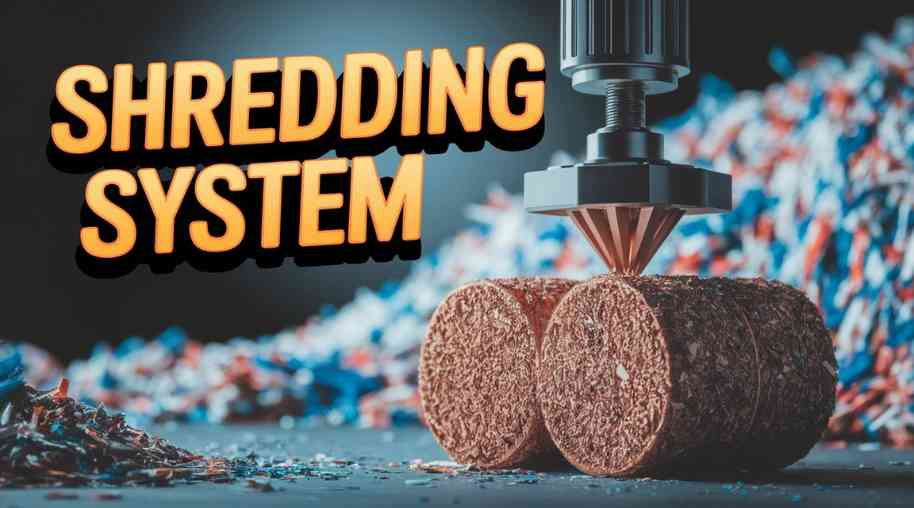SBS Full Form-Shredding and Briquetting System
by Shashi Gaherwar
0 1009
Shredding and Briquetting System: A Sustainable Waste Management Solution
Introduction
In the modern era of environmental consciousness and sustainability, shredding and briquetting systems have emerged as essential technologies in waste management. These systems are widely used to convert industrial waste, biomass, and other residual materials into compact, reusable briquettes, offering both economic and environmental benefits.
Shredding reduces waste volume, making material easier to handle, while briquetting compresses shredded waste into solid blocks that can be used as fuel or raw material. This process is widely used in manufacturing industries, recycling plants, and biomass energy production.

What is a Shredding and Briquetting System?
A shredding and briquetting system consists of two major components:
1. Shredders: These machines break down large materials into smaller, manageable pieces, making them suitable for further processing.
2. Briquetting Machines: These compress the shredded waste into solid briquettes, improving storage, transportation, and usability as a renewable energy source.
Types of Shredding and Briquetting Systems
Depending on the material and application, different types of shredding and briquetting systems are used:
Types of Shredders:
• Single-Shaft Shredders: Used for soft and medium-hard materials such as paper, plastic, and textiles.
• Double-Shaft Shredders: Ideal for tougher materials like wood, metal, and rubber.
• Four-Shaft Shredders: Provide finer shredding and are used in high-volume industries.
Types of Briquetting Machines:
• Mechanical Briquetting Press: Uses a piston mechanism to compress materials into briquettes.
• Hydraulic Briquetting Machine: Uses hydraulic pressure for better compression and density.
• Screw Briquetting Machine: Ideal for biomass materials, producing high-energy fuel briquettes.
Applications of Shredding and Briquetting Systems
These systems play a significant role in multiple industries, including:
• Waste Management and Recycling: Converts waste paper, plastics, and wood into reusable forms.
• Biomass Energy Production: Processes agricultural residues like sawdust, rice husks, and wood chips into eco-friendly briquettes.
• Metal and Scrap Processing: Shreds and compacts metal scraps for recycling and reusability.
• Manufacturing and Industrial Use: Reduces production waste and repurposes by-products efficiently.
Benefits of Shredding and Briquetting Systems
1. Waste Reduction and Recycling
By reducing the volume of waste materials, shredding and briquetting systems help industries manage and recycle their by-products efficiently. This minimizes landfill waste and promotes a circular economy.
2. Cost-Effective Waste Management
Industries can save on waste disposal costs by converting scrap materials into valuable resources. Briquettes can be used as fuel, reducing energy costs.
3. Eco-Friendly and Sustainable Energy Production
Briquettes serve as a renewable energy source, replacing fossil fuels and reducing carbon footprints. Biomass briquettes, in particular, produce lower emissions compared to traditional coal or wood fuels.
4. Improved Storage and Transportation
Compressed briquettes take up less space, making storage and transportation more efficient. This is particularly beneficial for industries dealing with bulk waste.
5. Compliance with Environmental Regulations
Many industries must adhere to strict environmental laws regarding waste disposal. Shredding and briquetting systems provide a sustainable solution for regulatory compliance.
How Shredding and Briquetting Systems Work
1. Material Collection: Waste materials such as wood, paper, plastic, or metal are gathered.
2. Shredding Process: The material is fed into the shredder, where it is cut into smaller pieces.
3. Compression and Briquetting: Shredded material is compacted into dense briquettes using hydraulic or mechanical pressure.
4. Cooling and Packaging: The briquettes are cooled and packed for storage or transportation.
Challenges and Solutions in Shredding and Briquetting
While shredding and briquetting systems offer numerous benefits, industries may face some challenges:
• High Initial Investment: The cost of installing shredding and briquetting systems can be substantial. However, the long-term savings on waste disposal and energy production make it a worthwhile investment.
• Maintenance Requirements: Regular maintenance is needed to ensure efficient operation. Investing in high-quality machinery with after-sales support can mitigate this issue.
• Material Suitability: Some materials require additional processing before briquetting. Pre-treatment solutions such as drying and sorting can help optimize the system’s efficiency.
Shredding and briquetting systems play a crucial role in sustainable waste management and energy production. These systems not only reduce waste and optimize recycling but also create eco-friendly fuel sources that benefit both industries and the environment. As global industries move toward sustainability, the adoption of shredding and briquetting technology will continue to grow, offering long-term benefits for waste reduction and energy efficiency.

Share:








Comments
Waiting for your comments